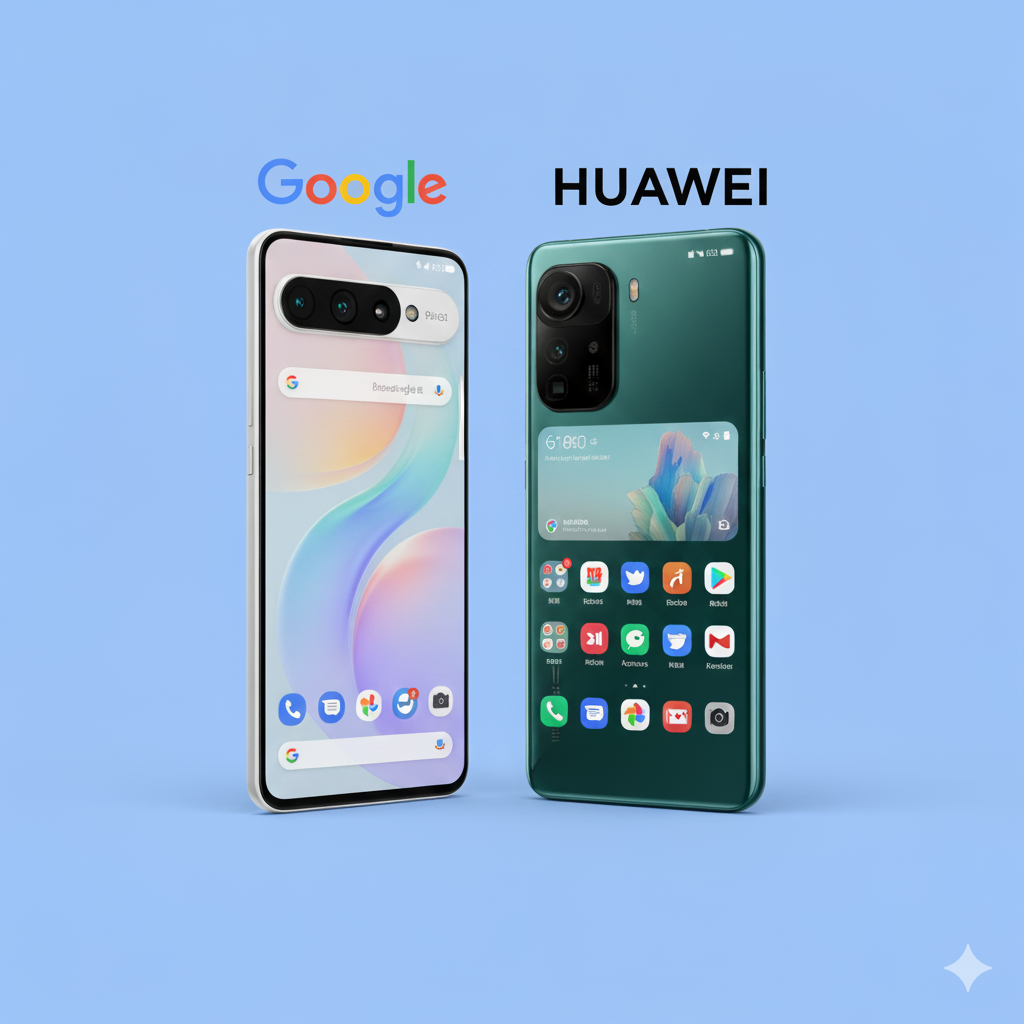In and outs of Google cutting ties with Huawei: why it happened, what they changed, and where it can go next.
Introduction
The breakup between Google and Huawei has had a significant impact. It was never just a corporate spat — it remade smartphone ecosystems, software support, and how Huawei was to survive on its own. I’ll go over the approximate reasons, the parts at risk, and what you should keep an eye on.
The Split Between Google and Huawei
Huawei was added to the U.S. Entity List in mid-2019. This meant ‘American companies’ couldn’t do unrestricted business with it. Therefore, Google had to cease licensing its proprietary services and software to Huawei if it is not okay with open-source solutions.
In practical terms, all their interaction ultimately resulted in a situation where no future Huawei devices were allowed to ship with Google Mobile Services (GMS). These span from the most basic part — the Play Store — to Gmail, Google Maps, YouTube, and Google’s own APIs, which are usually used by other apps. Meanwhile, every app it ever certified also became a forbidden deployment.
In the meantime, Huawei remained free to use and build upon AOSP, the open-source parts of Android. Yet, being unable to provide either account integrations of Google’s own — such as calendar, photos, and the like — nor even certified access for other apps: each must certify that it does something with Google services or APIs.
Immediate results for Huawei
From that moment on:
- New Huawei phones may not sport Google’s set of services. Out of the box, they lack Gmail, Maps, Play Store, and others.
- The company’s devices no longer receive Google’s security updates and have isolated full-fledged OSs. In the long run, this leaves them far less covered by software than other phones.
- The brand’s resale value and overall reputation took a hit since most users rely heavily on Google’s ecosystem.
- Resale value and part of the product’s reputation are damaged, as most markets have Google environments as the default.
- The phones still operate just fine, but the overall experience feels noticeably different without Google’s usual features.
How users are coping?
In general, existing Huawei devices (before the cutoff) continue to have access to Google services. That was all in the transition deal. But new ones are just off the hook.
Huawei countered the gap by promoting its own alternatives:
- HarmonyOS: Huawei’s own operating system. It aims to supplement the Android+ services equation.
- Huawei Mobile Services(HMS): Replaces multiple Google APIs/functions.
App Gallery and other app stores — With the Play Store gone, Huawei has to push its own store It becomes common for fallback options to be third-party app stores or sideloading.
But these substitutes aren’t exactly ideal. Most apps are late or simply missing. This forces users to turn to workarounds such as alternative app store installations or emulators of the Google services. (Others state that it is unstable or that the main apps (such as banking and payments) are not always working. (From user forums.)
The broader impact
On Huawei’s global position
Huawei’s strength in markets outside China took a blow. They saw a decline in consumer interest in areas where Google services are important. Huawei still performs well in China, where Google is already banned, but has lost market share globally.
On the Android ecosystem
When one of the largest manufacturers in the Google ecosystem lost a major partner, it sent shockwaves throughout the industry. That might spur further division — various phone manufacturers relentlessly pushing their own system updates or settings for Android itself.
On software development
Developers are now faced with the decision of whether to support devices that run without Google services. That complicates things: more versions to test, more fallback options for the code, or even giving up on Huawei altogether for certain features.
Common mistakes and pitfalls
- Assuming that sideloading Google apps makes everything function properly. It often doesn’t. Certain apps rely upon secret APIs and services you cannot recreate.
- Purchasing a new Huawei device, expecting it to be fully backed by Google services. For models released after the split, that is no longer true.
- Ignoring security risks. Older devices may not receive patches or be scanned without Google’s update pipeline or Play Protect.
Overestimating Harmony OS’s maturity. It has potential, but it is still behind.
What might happen next?
It seems that Huawei may be stuck with blood simple if they aren’t aggressively building out their own ecosystem. If it serves up sufficient applications, services, and compelling alternatives, it could regain relevance — especially outside the U.S. market. Alternatively, it could partner with other companies to offer app services.
On the user-facing side, we might start to see the beginnings of hybrid solutions: phones that run HMS, but also feature a Google-esque interface through third-party means. Additionally, other smartphone manufacturers may try Google-free handsets with a view to Huawei’s predicament serving as a test case.
FAQs
Q: What happens to my old Huawei phone with Google?
Phones that ship before the cut-off (pre‑2019) will retain their Google apps and support, as long as the bottom doesn’t fall out. However, history suggests that without total updates, time will inevitably age those devices.
Q: Can I install GMS manually on newer Huawei phones?
Yes in some cases, but only through unofficial hacks, app emulators, or third-party tools. Well, that is risky, unsupported, and in many cases, imperfect.
Q: Is Harmony OS a complete replacement for Android?
Not fully yet. This is Huawei’s own take, but it doesn’t quite compete with the breadth of devices or developer support offered by Android and Google services just yet.
Q: But where are people who are actually using this on the ground and bitching about things breaking?
Yes. Users are reporting failures of payment apps, discontinuity of some Google-dependent apps, longer loading times, and instability when running Google apps through workarounds. One user on the forums indicated that their banking app “didn’t work quite so well” after the switchover.
Conclusion
This split was not only technical, but also political, legal, and strategic. That compelled Huawei to reconsider its approach to phone and software design. Deep-linked image for: How you will deal with it: 7 Layered approach to Metaverse.
But it’s not over. Huawei is making a concerted effort to rectify that. Whether it works or not will depend on if users and developers embrace its alternative ecosystem or if other platforms move in to fill the void.

